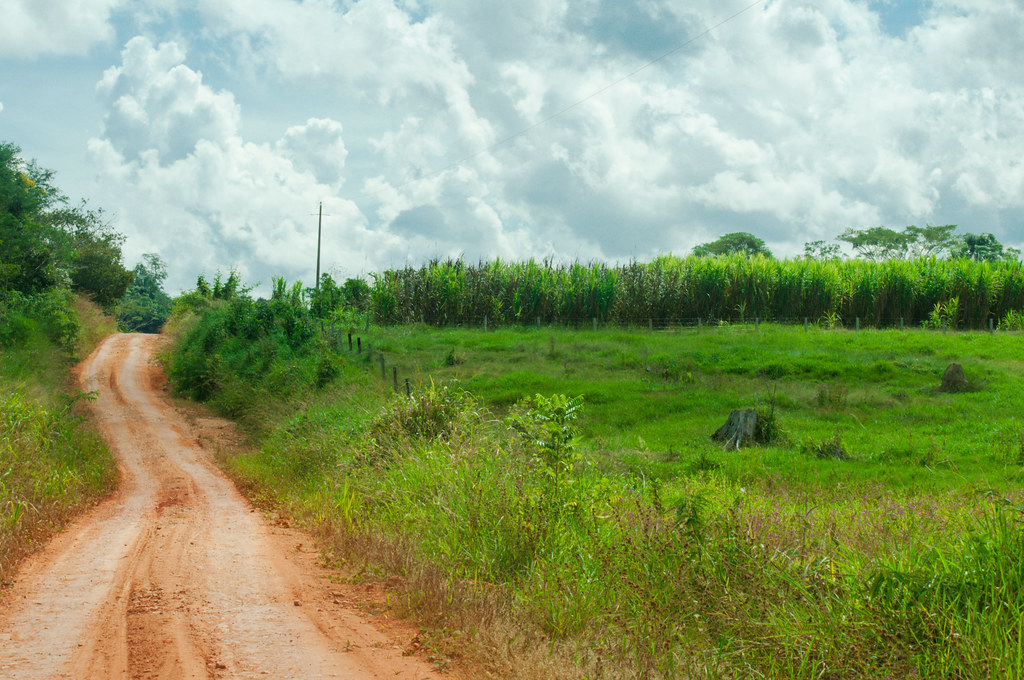Unveiling the hidden treasures concealed within the realm of non-agricultural and non-timber land is a quest that captures the imagination of investors and real estate enthusiasts alike. Beyond the vast stretches of lush fields and towering forests lies an enigma waiting to be decoded – the true market worth of these seemingly unassuming landscapes. In this captivating journey, we embark on an exploration of the uncharted territories where value lies hidden beneath the surface, where visionaries and innovators unravel the mysteries that can unlock unprecedented opportunities. Step into a world where creativity merges with neutrality, and join us on a quest to unravel the secrets of non-ag/timber land’s market worth.
Unraveling the Enigma: Understanding the Intricacies of Non Ag/Timber Land Valuation
When it comes to valuing non-agricultural or timber land, it can often feel like entering a maze of complexities. Understanding the intricacies of this type of land valuation is crucial for investors, appraisers, and anyone involved in real estate transactions. So, let’s dive in and unravel the enigma surrounding non-ag/timber land valuation!
The first key aspect to consider is the land’s location. Just like in the world of real estate, location plays a vital role in determining the value of non-ag/timber land. Factors such as proximity to urban areas, access to amenities, and availability of utilities can greatly influence its worth. Additionally, zoning regulations and land use restrictions are important considerations that impact how the land can be utilized.
- Property features: Assessing the unique characteristics of the land is a fundamental step in valuation. This includes examining the topography, soil quality, water resources, as well as any improvements or structures on the land.
- Market analysis: Delving into the current market trends and demand for non-ag/timber land in the area is crucial. Understanding the supply and demand dynamics, as well as the potential for future development, can greatly impact its value.
- Income potential: For those considering investments, evaluating the income-generating potential of the land is essential. This includes assessing factors such as leasing opportunities, timber harvesting, mineral rights, or any other potential revenue streams.
Non-ag/timber land valuation can certainly be a complex puzzle, but by unraveling its intricacies, we gain a deeper understanding of its worth. Whether you’re a landowner, investor, or industry professional, this knowledge empowers you to make informed decisions when it comes to non-ag/timber land transactions.

Demystifying the Factors Influencing Non Ag/Timber Land Market Worth
Understanding the complexities behind determining the market worth of non-agricultural and timber land can often feel like deciphering a mystery. However, by unraveling the various factors that influence its value, a clearer picture emerges. Here, we delve deep into the intricacies of this market, shedding light on the key elements that drive land valuations.
- Location, location, location: Undoubtedly, one of the most significant factors affecting non-ag/timber land value is its location. Properties located in prime areas, such as near cities or in highly desirable regions, tend to command higher prices due to their proximity to amenities, potential for development, and increased demand.
- Land type and topography: The physical characteristics of the land play a crucial role in determining its market worth. Factors like soil quality, water availability, zoning restrictions, and topography can greatly impact the land’s potential for various uses, such as residential, commercial, or recreational. A flat, well-drained piece of land with fertile soil may be more valuable than hilly terrain with limited water resources.
- Market conditions and trends: The state of the overall real estate market, as well as specific trends within the non-ag/timber land sector, can significantly influence its worth. Factors such as interest rates, economic growth, population changes, and government policies all contribute to the dynamics of the market and may cause fluctuations in land prices.
- Access and infrastructure: The ease of access to the property and the available infrastructure can impact its value. Land parcels with well-maintained roads, utilities, and proximity to transportation hubs are often more desirable and therefore have higher market worth. Conversely, remote or inaccessible locations may decrease the property’s value due to limited development potential or difficulty in reaching the land.
In conclusion, determining the market worth of non-agricultural and timber land involves considering a multitude of factors. While location, land type, market conditions, and access are key influences, it’s important to recognize that each property is unique. By demystifying these factors and conducting diligent research, potential buyers, sellers, and investors can gain a better understanding of the market and make informed decisions when it comes to non-ag/timber land transactions.

Insights into Unlocking Hidden Value: Strategies to Maximize Returns on Non Ag/Timber Land Investments
Unveiling Untapped Potential: Unearthing Value Beyond Traditional Agriculture
When it comes to investing in non-agricultural and non-timber land, exploring alternative strategies can unlock remarkable hidden value that many overlook. By expanding our perspectives and thinking outside traditional realms, we can maximize returns on these often underutilized and undervalued investments. So, let’s dive into some insights and strategies that open the doors to uncharted opportunities:
- Environmental Conservation: Many non-ag/timber lands encompass vast natural resources, wildlife habitats, or even endangered species. By leveraging conservation easements or partnering with environmental organizations for responsible land stewardship, investors can generate stable income streams while safeguarding these invaluable ecosystems.
- Renewable Energy: The world’s growing energy demands pave the way for renewable energy initiatives. Consider harnessing the potential of your non-ag/timber lands by installing solar panels, wind turbines, or even exploring geothermal projects. Generating clean energy not only provides sustainable returns but contributes to a greener future.
- Recreational Amenities: Hidden value can often be found in the recreational appeal of non-ag/timber lands. Properties near popular outdoor destinations, lakes, or mountains can be repurposed for recreational activities like camping, hiking trails, or eco-tourism. By creating immersive experiences aligned with nature, investors can tap into a diverse and growing market.
These are just a few strategies among a multitude waiting to be explored! Investing in non-ag/timber lands doesn’t have to be limited to conventional methodologies. By embracing innovative approaches, we can unlock the hidden potential, paving the way for increased financial returns while preserving and enhancing the natural environment.

Emerging Trends and Recommendations for Enhancing Non Ag/Timber Land Market Performance
In today’s rapidly evolving market, non-agricultural and non-timber lands are gaining significant attention from investors seeking alternative ways to diversify their portfolios. As we look towards the future, several emerging trends are set to impact the performance of these lands. One key trend is the increasing demand for recreational and leisure properties, driven by the growing interest in outdoor activities and eco-tourism. Investing in properties that offer unique recreational opportunities, such as hiking trails, fishing lakes, or wildlife sanctuaries, can attract a wide range of buyers and yield substantial returns.
Moreover, the conservation of non-agricultural lands is becoming a pressing concern. Conservation easements, which restrict certain types of development on the property, are gaining popularity as a means to preserve the natural beauty and ecological value of these lands. Investors who prioritize sustainability and environmental stewardship can capitalize on this trend by acquiring properties with existing or potential conservation easements. Such investments not only contribute to the preservation of biodiversity but also provide tax benefits and potential partnerships with conservation organizations.
To Wrap It Up
As we conclude our exploration into unraveling the mysteries of non-agricultural and non-timber land market worth, we emerge from the depths of ambiguity armed with knowledge and insight. We have ventured into the realm of this enigmatic market, peeling back its layers to reveal the hidden truths that lie within.
Through our journey, we have discovered that the value of these unconventional lands is not just confined to the boundaries of our perception. It extends far beyond, transcending mere monetary worth. The allure of non-ag/timber land lies in the untapped potential it offers, the blank canvas upon which dreams can be painted.
We have delved into the intricate threads that weave this intricate market, recognizing the factors that dictate its worth. From its location, topography, and accessibility to its zoning regulations and untapped resources, every piece of the puzzle contributes to the grand tapestry of its market value.
But it is not only numbers and statistics that define the worth of non-ag/timber land. It is the intangible elements, the prospect of long-term growth, and the unbounded possibilities it presents that set it apart.
So as we part ways, armed with a comprehensive understanding of this enigma, let us remember that the non-ag/timber land market is a realm of boundless opportunity. It is a realm where visionaries and dreamers forge their path, where the value lies beyond the realms of our perception, waiting to be discovered.
Unlocking the enigma of non-ag/timber land’s market worth is an ongoing quest, one that requires constant investigation and adaptation. As we embark on future endeavors in this ever-evolving market, let us embrace the challenge and continue to decode the secrets that lie within, uniting our analytical prowess and creative thinking.
So, fellow adventurers, let us venture forth with newfound wisdom and unlock the potential that lies dormant within the horizon of non-ag/timber land. With each step we take, we contribute to the ever-expanding narrative of its worth, forever decoding and defining an intricately woven market of limitless possibilities.
